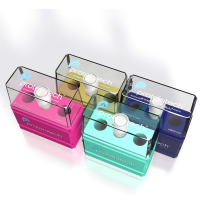An Improved Rapid Method of Isolating RNA from Cultured Cells
互联网
531
The purification of good-quality RNA from tissue-cultured cells is essential for many applications and several methods exist for the isolation of total RNA. Most protocols rely on sodium dodecyl sulfate (SDS) (1 ) or guamdium thiocyanate (2 ,3 ) to simultaneously lyse cells and mactivate endogenous ribonucleases. In those procedures, the RNA 1s separated from cellular DNA and proteins by centrifugation through 5.7 M CsC1, or by acid phenol extraction. In the former, the RNA passes through the 5.7MCsCl but proteins and large DNA molecules are excluded. In the latter method, protein and DNA partition into the acid phenol phase leaving the RNA in the aqueous phase. The method described below uses SDS to lyse cells and acidic phenol to remove DNA and proteins, and is a modification of the Stallcup and Washington procedure (1 ). The modifications were originally made in order to reduce the amount of small DNA molecules, such as plasmids that are not efficiently removed in most other simple methods. Many researchers use transient transfection to study the fate of RNA produced from plasmid DNA. The removal of transfected plasmids, particularly if they have undergone replication, is critical in order to avoid hybrids, which can score as full-length RNA in Sl or ribonuclease protection assays (see Chapter 16 ).









